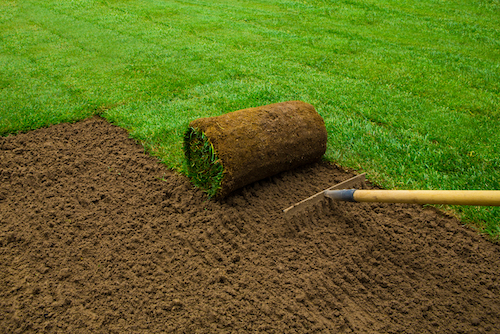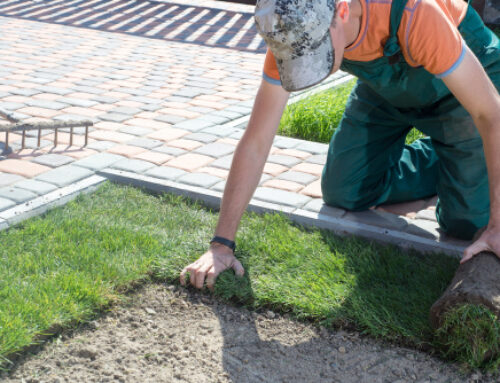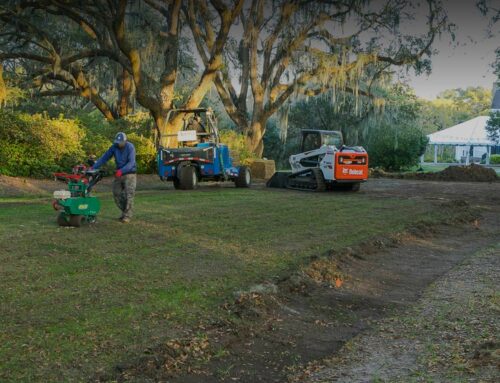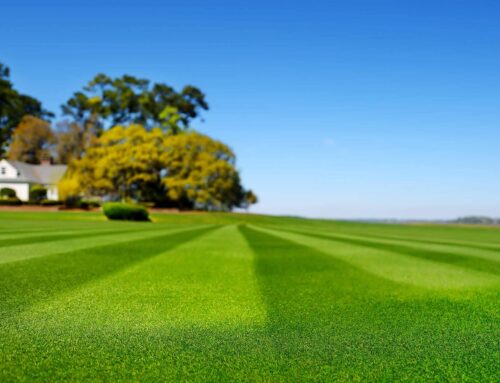Introduction to Curb Appeal
Enhancing your home’s curb appeal is not just about making an excellent first impression; it’s about creating a welcoming environment that reflects pride in homeownership. Curb appeal can significantly impact a property’s perceived value, attracting potential buyers or simply earning the admiration of passersby and neighbours. One of the most influential and transformative methods to boost curb appeal is through the strategic use of sod. Sod, or turf grass, offers an instant upgrade to any outdoor space, replacing patchy, weedy lawns with lush, green carpeting that invites the eye and enhances the overall aesthetic of your property. Unlike seeding, which requires time for germination and growth, sod provides immediate results, making it an ideal solution for homeowners looking to improve their home’s exterior appearance quickly. This guide will explore the benefits of using sod to enhance curb appeal, offering insights into planning, installation, and maintenance to help homeowners achieve a picture-perfect lawn.
The Basics of Sod for Homeowners
What is Sod?
Sod, commonly known as turf grass, is a pre-grown patch of lawn that can be laid down to create a mature and lush green space instantly. It consists of grass and a thin layer of soil beneath it, held together by the root system or a biodegradable material. The primary benefits of sod include its ability to provide an immediate aesthetic uplift, prevent soil erosion, and improve air and water quality. Unlike seeding, which can take weeks or even months to establish a lawn, sod offers homeowners an instant solution to bare or damaged yards, making it an attractive option for quick and effective landscaping improvements.
Why Choose Sod for Curb Appeal?
Opting for sod installation is a strategic choice for homeowners aiming to enhance their property’s curb appeal swiftly and efficiently. Quick transformation is one of the most compelling reasons to choose sod. Within a day, it can convert a dusty, barren plot into a vibrant, green lawn, dramatically improving the home’s appearance and invitingness. This immediate change can significantly impact a property’s aesthetic appeal, setting a positive tone for the rest of the house.
Moreover, sod offers notable environmental benefits. It starts to function as a natural air filter as soon as it is laid, capturing dust, producing oxygen, and cooling the surrounding area. It also helps control erosion and improve water quality by filtering rainwater.
Finally, investing in sod can lead to an increased property value. A well-maintained sod lawn can boost the overall valuation of your home by enhancing its curb appeal. For homeowners considering selling their property or those simply wishing to invest in their home’s future, sod installation offers a cost-effective way to make a significant impact on their home’s market appeal and environmental footprint.
Planning Your Sod Project
Assessing Your Lawn’s Needs
Before embarking on a sod installation project, it’s crucial to assess your law n’s specific needs to ensure the success and longevity of your new turf. Sunlight is a primary factor; different grass types require varying amounts of light, with some thriving in full sun and others in partial shade. Soil type also plays a significant role in your sod’s health. Testing your soil can provide insights into its composition, pH level, and nutrient content, guiding you in selecting the sod type best suited to your environment and in making any necessary soil amendments. Lastly, consider your yard size and layout. Understanding the dimensions and contours of your space can help in accurately calculating the amount of sod needed, ensuring a seamless installation process. Tailoring your sod choice to these factors can dramatically enhance its growth, appearance, and resilience.
Choosing the Right Type of Sod
Selecting the appropriate type of sod for your lawn is pivotal, with the choice mainly depending on your climate and the specific conditions of your yard. Cool-season grasses, such as Kentucky bluegrass, perennial ryegrass, and fescues, thrive in northern climates where temperatures are moderate. These varieties are known for their ability to withstand cold winters and are ideal for areas with significant temperature fluctuations.
Conversely, warm-season grasses like Bermuda, Zoysia, St. Augustine, and centipede grass are better suited to southern climates. They flourish in hot summer temperatures and generally require less water than their cool-season counterparts.
When choosing sod, it’s essential to consider the best types for your climate as well as your yard’s specific conditions, such as shade and soil type. Consulting with a local landscaping expert or extension service can provide valuable guidance in making the best selection for your area, ensuring that your sod lawn remains healthy and vibrant throughout the year.
Installation and Maintenance
Preparing Your Yard for Sod
The key to a successful sod installation begins with thorough soil preparation. Start by removing weeds, debris, and any old grass. Loosen the top 6 to 8 inches of soil with a rototiller, and mix in a layer of compost to enrich the soil with nutrients. This step ensures your sod has a healthy foundation for root growth. Next, level the soil with a rake to remove any lumps and create a smooth surface. Measuring and ordering the correct amount of sod is crucial; measure your yard accurately and add a little extra to account for cuts and adjustments.
Installing Your Sod
Step-by-step guide:
- Begin by laying sod along a straight edge, such as a driveway or sidewalk, to ensure straight lines.
- Stagger the seams in a brick-like pattern to prevent lines from showing and strengthen the overall structure.
- Use a lawn roller to press the sod into the soil, eliminating air pockets and ensuring good root contact.
Tips for success:
- Water the prepared soil lightly before laying the sod to provide a moist base.
- Trim edges to fit around curves and obstacles with a sharp knife for a neat appearance.
- Water the newly laid sod generously immediately after installation to encourage root establishment.
Maintaining Your New Sod Lawn
Watering is most critical in the first few weeks after installation. Keep the sod and underlying soil moist (not soggy) until the roots have firmly established. Gradually reduce the watering frequency to encourage more profound root growth.
Mowing should begin when the sod has rooted, typically two to three weeks after installation. Ensure your mower blade is sharp, and never remove more than one-third of the grass height at a time to avoid stress on the lawn.
Fertilizing your new sod lawn should wait until after it has fully taken root, usually about six weeks post-installation. Use a starter fertilizer that matches your soil’s nutrient needs, and follow a regular feeding schedule based on the type of grass you’ve installed to promote healthy growth and maintain your lawn’s lush, green appearance.
Advanced Curb Appeal Enhancements
Design Tips for Maximizing Curb Appeal with Sod
To elevate your home’s curb appeal beyond the basics, consider creating patterns and shapes with your sod installation. This can be achieved by laying sod in distinctive designs, such as checkerboards or waves, which add texture and visual interest to your lawn. These patterns can guide the eye towards your home’s architectural features or lead visitors along a garden path, enhancing the overall landscape design.
Incorporating landscaping features into your sodded lawn can further enhance its appeal. Consider adding a focal point, such as a garden bed, a water feature, or a decorative sculpture, around which the sod can be laid. This not only breaks up the expanse of green but also adds character and charm to your yard. Edging your sod with stone, brick, or metal borders can neatly define spaces, adding to the aesthetic appeal and making maintenance easier.
Complementary Landscaping Ideas
Plant selection is crucial in complementing your sodded lawn and boosting curb appeal. Choose plants that contrast with the green of the sod for visual interest, such as flowering shrubs, perennials with colourful foliage, or trees that provide shade and structure. Consider these plants’ colour, texture, and height to create layers and depth in your landscaping, making it more inviting.
Decorative elements such as garden paths, lighting, and outdoor art can also enhance the appeal of your sodded lawn. A well-designed path, whether made from stepping stones, gravel, or pavers, can add structure to your garden and make it more accessible. Strategic lighting can highlight your lawn’s best features and create a welcoming ambience after dark. Finally, outdoor art pieces, bird baths, or wind chimes can add a personal touch to your garden, reflecting your style and making your outdoor space unique.
By integrating these advanced design tips and complementary landscaping ideas, you can maximize your home’s curb appeal and create a stunning and inviting outdoor space that stands out in your neighbourhood.
Overcoming Challenges
Dealing with Common Sod Problems
Even with the best planning and care, sod lawns can encounter challenges. Pests and diseases are common issues that can mar the appearance of your sod and compromise its health. Grubs, sod webworms, and fungal diseases like brown patches can quickly spread if not addressed. Regular monitoring of your lawn can help you spot these problems early. Applying appropriate organic or chemical treatments as needed and maintaining a healthy lawn through proper watering and fertilization can prevent infestations and diseases from taking hold.
Weather-related issues also pose significant challenges to sod lawns. Extreme temperatures, either too hot or too cold, can stress your lawn, while excessive rain can lead to waterlogging and root rot. To mitigate these issues, ensure your lawn has adequate drainage and adjust your watering schedule according to the weather conditions. During hot, dry periods, early morning watering can help prevent evaporation and provide your sod with the moisture it needs without wasting water. In colder climates, protecting your sod with a layer of mulch before the winter can help insulate the roots from freezing temperatures.
By staying vigilant and responsive to these common challenges, you can maintain a healthy, vibrant sod lawn that enhances your home’s curb appeal year-round.





